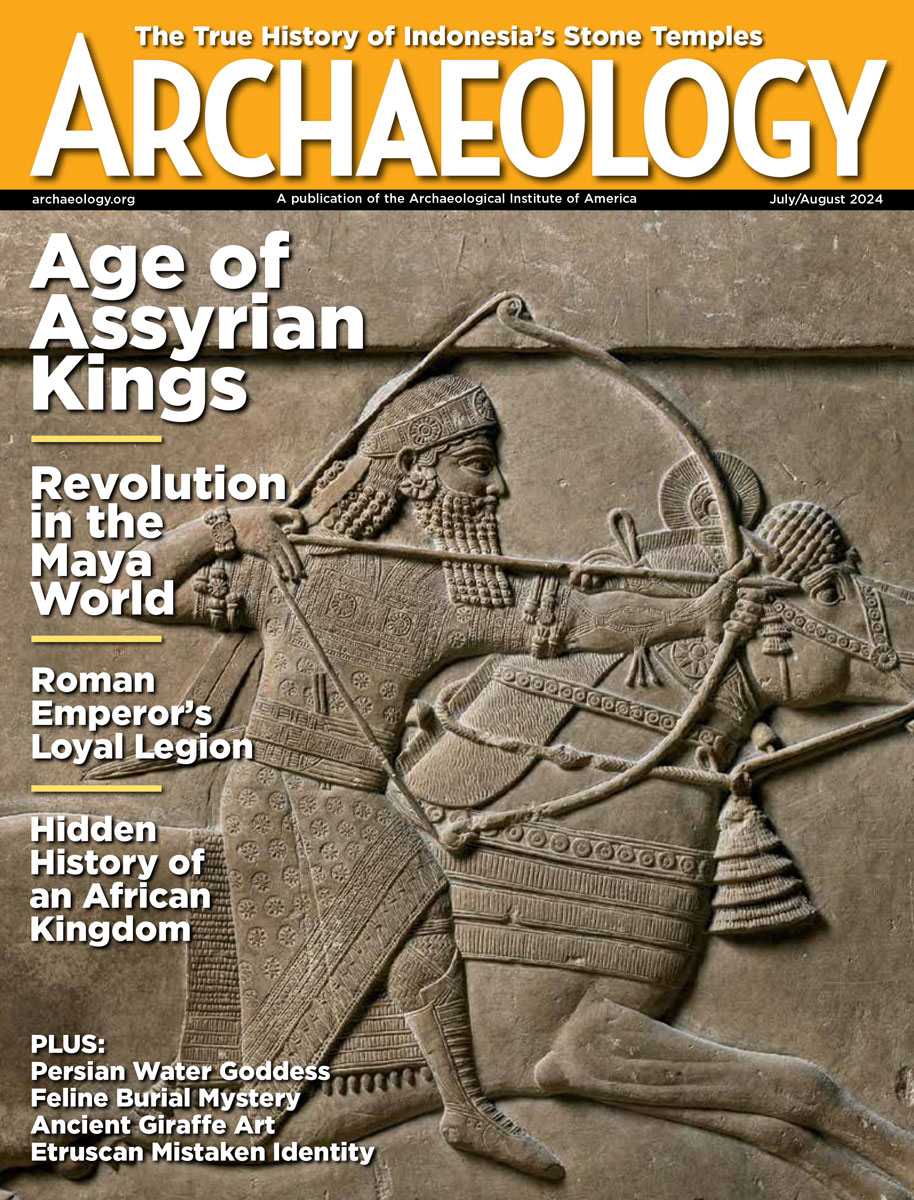Monday, April 7
April 7, 2008
Stone tools and plant material dated to 35,000 years ago were uncovered in a rock shelter in remote northwestern Australia. “It will be very interesting to see if this work can be related in any way to rock engravings in the area,” commented archaeologist Ian Crawford.
The ancient Appian Way links Rome to the southern city of Brindisi, and should be protected by law as the Regional Park of the Appia Antica. But vandalism and illegal development are damaging the road’s archaeological sites. Â
Three thousand families living on a mound in northern India have been ordered to evacuate. The Archaeological Service of India will excavate a portion of the 1,000-year-old fort within the mound. Â
Whaling began at least 3,000 years ago, according to Daniel Odess of the University of Alaska Museum. His team found an ivory carving depicting whale hunting at the site of Un’en’en on Russia’s Chukotka Peninsula. “It’s about as close to a smoking gun as you get in archaeology,” he said. Â
A photograph of lifeboats from the HMAS Sydney, which was sunk in the Indian Ocean during World War II by the German raider Kormoran, was released to the public. Â
Skeletons uncovered in a mass grave in Oxford may have belonged to executed criminals or Saxon soldiers killed in battle, and not Romans as previously believed. Â
Wari-Bateshwar is known for its abundance of 2,500-year-old beads crafted from semi-precious stones that are not found in Bangladesh. Archaeologists think that the raw materials were imported to the site, where the beads were produced, and then they were traded abroad. Â
Canadian anthropologists spoke to writer Lynda Hurst of the Toronto Star about the significance of the 1.3-million-year-old jaw bone discovered in Spain. Â
Here’s another article on the new excavation taking place at Stonehenge.
- Comments Off on Monday, April 7









